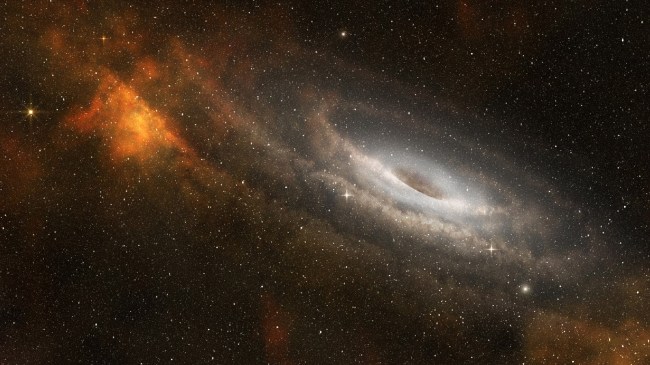iStockphoto
One of the biggest and most fascinating mysteries of our universe is the question of what lies at the other end of black holes?
As NASA explains, “These objects aren’t really holes. They’re huge concentrations of matter packed into very tiny spaces. A black hole is so dense that gravity just beneath its surface, the event horizon, is strong enough that nothing – not even light – can escape. The event horizon isn’t a surface like Earth’s or even the Sun’s. It’s a boundary that contains all the matter that makes up the black hole.”
However, NASA adds, “There is much we don’t know about black holes, like what matter looks like inside their event horizons.”
Which is why people like theoretical physicist Nikodem Poplawski published a groundbreaking paper 14 years ago that suggests the center of a black hole could contain a pathway to another universe.
Poplawski not only made that suggestion in his study, he also suggested, “our own Universe may be the interior of a black hole existing inside another universe.”
Science and technology journalist Sarah Wells explains for Popular Mechanics…
On its face, Poplawski’s theory seems simple enough. He explains that the “other side” of a black hole does not end in a singularity, but instead is connected via an Einstein-Rosen bridge (otherwise known as a wormhole) to something called a white hole. As its name suggests, a white hole is the opposite of a black hole in many ways; where a black hole swallows all light and matter, a white hole can spill it out.
Physicists originally considered the idea in the 1960s and 1970s, Poplawski says, but they lacked a mechanism to explain it. Enter: torsion. “At extremely large densities, torsion appears like a gravitational, repulsive force,” he explains. “That’s how it can prevent singularities.”
Poplawski believes this cosmic tunnel system could explain the creation of all matter in our universe.
“I think what happened is that when the black hole’s parent universe was collapsing … [because of] torsion, the singularity did not form,” Poplawski said. “Because the matter was already within the event horizon and it wanted to move, it decided to create new space. Which is basically our growing universe.”
As for how all of that can be proven? Scientists are working on that.
“A major achievement of Poplawski is that he was one of the first in the 21st century to return to constructing a theoretical model of a universe inside a black hole,” said Dejan Stojkovic, professor of cosmology at the University of Buffalo. “I believe Poplawski is right, and our universe is inside a black hole hundreds of billions of light-years in size.”
Earlier this year, a study suggested that there could be a “dark mirror” parallel universe that exists right alongside ours.
Last year, in another study, physicists stated that they believe an “anti-universe” where time goes backwards could exist next to ours.
And NASA has even come right out and said black holes “don’t provide shortcuts between different points in space, or portals to other dimensions or universes.”
So, obviously, there is still much we do not know.

